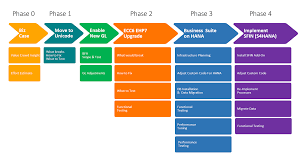Exploring the World of Greenfield Software Development: Building from Scratch for Success
The Concept of Greenfield Software Development
Greenfield software development refers to the process of creating a new software project from scratch, without having to consider any existing legacy systems or constraints. It is like starting with a blank slate, allowing developers to design and build the software using the latest technologies and best practices.
Benefits of Greenfield Development
One of the key advantages of greenfield development is the freedom it provides to developers. They can make decisions based on current requirements and trends, without being limited by past decisions or outdated technologies. This approach often results in cleaner code, better performance, and easier maintenance in the long run.
Challenges in Greenfield Development
While greenfield development offers many benefits, it also comes with its own set of challenges. Developers need to carefully plan and design the new system to ensure that it meets all requirements and can scale effectively as the project grows. Additionally, integrating the new software with existing systems or databases can present compatibility issues that need to be addressed.
Best Practices for Greenfield Projects
When embarking on a greenfield software development project, it is important to follow certain best practices to ensure its success:
- Thorough Planning: Take the time to define clear objectives, requirements, and milestones for the project.
- Use Modern Technologies: Leverage the latest tools and frameworks to build a robust and scalable system.
- Modular Design: Break down the software into smaller modules for easier development and maintenance.
- Continuous Testing: Implement automated testing processes to catch bugs early and ensure quality throughout development.
- Documentation: Document all aspects of the project to aid in future maintenance and updates.
In Conclusion
Greenfield software development offers a fresh start for creating innovative solutions that meet current needs effectively. By following best practices and addressing challenges proactively, developers can build robust systems that drive success for businesses in today’s fast-paced digital world.
5 Essential Tips for Successful Greenfield Software Development
- Start with a clear project vision and well-defined requirements.
- Choose modern and suitable technologies for your project.
- Follow best practices for code organization and maintainability.
- Implement automated testing from the beginning to ensure software quality.
- Regularly communicate and collaborate with stakeholders to gather feedback and make necessary adjustments.
Start with a clear project vision and well-defined requirements.
Starting a greenfield software development project with a clear project vision and well-defined requirements is crucial for its success. A solid project vision sets the direction and goals for the development team, ensuring that everyone is aligned and working towards a common objective. Well-defined requirements provide a roadmap for the development process, guiding decisions and priorities throughout the project lifecycle. By establishing clarity from the outset, teams can avoid misunderstandings, reduce rework, and deliver a high-quality software product that meets stakeholders’ expectations.
Choose modern and suitable technologies for your project.
When embarking on a greenfield software development project, it is crucial to choose modern and suitable technologies that align with the project’s requirements and objectives. By selecting the right tools and frameworks, developers can leverage the latest advancements in technology to build a robust and scalable system. Modern technologies not only enhance performance but also facilitate easier maintenance and future updates. Making informed decisions about technology choices sets a strong foundation for the project’s success and ensures compatibility with evolving industry standards.
Follow best practices for code organization and maintainability.
When engaging in greenfield software development, it is essential to adhere to best practices for code organization and maintainability. By structuring the codebase effectively and following established conventions, developers can enhance readability, facilitate collaboration among team members, and ensure that the software remains maintainable in the long term. Implementing clear naming conventions, organizing files and directories logically, and documenting code properly are crucial steps in promoting a sustainable and scalable development process. Emphasizing code organization and maintainability from the outset can streamline future updates, debugging efforts, and overall project success.
Implement automated testing from the beginning to ensure software quality.
Implementing automated testing from the beginning of a greenfield software development project is crucial to ensuring software quality. By incorporating automated testing processes early on, developers can identify and address potential issues swiftly, leading to a more stable and reliable final product. This proactive approach not only helps in catching bugs at an early stage but also streamlines the development process by providing instant feedback on code changes. Automated testing sets a solid foundation for maintaining high-quality standards throughout the project lifecycle, ultimately resulting in a more robust and efficient software solution.
Regularly communicate and collaborate with stakeholders to gather feedback and make necessary adjustments.
Regular communication and collaboration with stakeholders are crucial aspects of successful greenfield software development. By engaging with stakeholders regularly, developers can gather valuable feedback on the project’s progress, requirements, and potential adjustments needed. This feedback loop ensures that the software aligns with stakeholders’ expectations and can be fine-tuned throughout the development process to meet evolving needs effectively. Effective communication and collaboration foster a sense of partnership between developers and stakeholders, leading to a more successful outcome for the greenfield software project.




